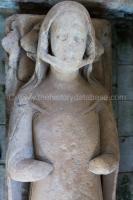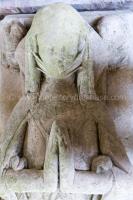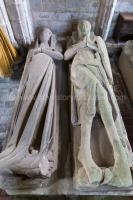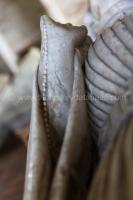Text this colour links to Pages. Text this colour links to Family Trees. Place the mouse over images to see a larger image. Click on paintings to see the painter's Biography Page. Mouse over links for a preview. Move the mouse off the painting or link to close the popup.
All About History Books
The Chronicle of Walter of Guisborough, a canon regular of the Augustinian Guisborough Priory, Yorkshire, formerly known as The Chronicle of Walter of Hemingburgh, describes the period from 1066 to 1346. Before 1274 the Chronicle is based on other works. Thereafter, the Chronicle is original, and a remarkable source for the events of the time. This book provides a translation of the Chronicle from that date. The Latin source for our translation is the 1849 work edited by Hans Claude Hamilton. Hamilton, in his preface, says: "In the present work we behold perhaps one of the finest samples of our early chronicles, both as regards the value of the events recorded, and the correctness with which they are detailed; Nor will the pleasing style of composition be lightly passed over by those capable of seeing reflected from it the tokens of a vigorous and cultivated mind, and a favourable specimen of the learning and taste of the age in which it was framed." Available at Amazon in eBook and Paperback.
St Mary & All Saints Church, Willoughby-on-the-Wolds is in Willoughby-on-the-Wolds, Nottinghamshire [Map], Churches in Nottinghamshire.
Monument to two unknown ladies in St Mary & All Saints Church, Willoughby-on-the-Wolds [Map].



After 1325. St Mary & All Saints Church, Willoughby-on-the-Wolds [Map]. Monument to Richard Bugge aka Willoughby (deceased).
Richard Bugge aka Willoughby: Around 1233 he was born to Robert Bugge de Bingham at Willoughby-on-the-Wolds, Nottinghamshire [Map]. In 1325 Richard Bugge aka Willoughby died at Willoughby-on-the-Wolds, Nottinghamshire [Map].
On 14th March 1362 Richard Willoughby (age 72) died. He was buried at St Mary & All Saints Church, Willoughby-on-the-Wolds [Map].



In 1369 Richard Willoughby died. Monument in St Mary & All Saints Church, Willoughby-on-the-Wolds [Map]. Camail and Jupon Period.
Richard Willoughby: he was born to Richard Willoughby.




Effigy in Willoughby Church. Willoughby Church [Map]
THIS is supposed to be one of the Lords of Willoughby, in Nottinghamshire. Perhaps Sir Richard de Willoughby, who was Chief Justice of the King's Bench 11th Edward IIIa Chaucer says of his Serjeant-at-law,
"Justice he was full oftin in Assise,
By patent, and by pleine commissione;"
and that he was
"Girt with a ceint of silk with barris smale."
The tunic of the figure is confined by a richly-embossed girdle.
Details. Ornament of the girdle.
In 1417 Isabel Foljambe (age 22) was buried at St Mary & All Saints Church, Willoughby-on-the-Wolds [Map].
On or before 15th November 1448, the date he was buried at St Mary & All Saints Church, Willoughby-on-the-Wolds [Map], Hugh Willoughby died. Monument to Hugh Willoughby and Margaret Freville (age 47). Early Plate Bascinet and Gorget Period. Hip Belt. Horned Headdress. Chest with Weepers holding Shields. Dogs chewing at her dress with Studded Collar. Angels Supporting Pillow. Possibly Sutton and Prentys.
Hugh Willoughby: he was born to Edmund Willoughby and Isabel Annesley. Around 1395 Hugh Willoughby and Isabel Foljambe were married. Before 1419 Hugh Willoughby and Margaret Freville were married.
Margaret Freville: In 1401 she was born to Baldwin Freville. In 1493 she died.











Introduction. Of the usual Civil Costume of the fourteenth and fifteenth centuries, excellent examples will be found in the tombs of William of Hatfield, William of Windsor, Blanch dela Tour, and the mourners on the monument of Sir Roger de Kerdeston. One of these mourners, a female, and the figure of the Lady of Sir Miles Stapleton, have long pendant lappets to their sleeves. That of the Judge in Willoughby church [Map], Nottinghamshire, has a tunic to which very full sleeves are attached, and he is girt with a rich ceint, or girdle; an appendage of knights, civilians, and ecclesiastics (when unattired in the sacred vestments), in the fourteenth century.
"Change of clothing every day.
With golden girdles, great an small.'
Plowman's Tale.